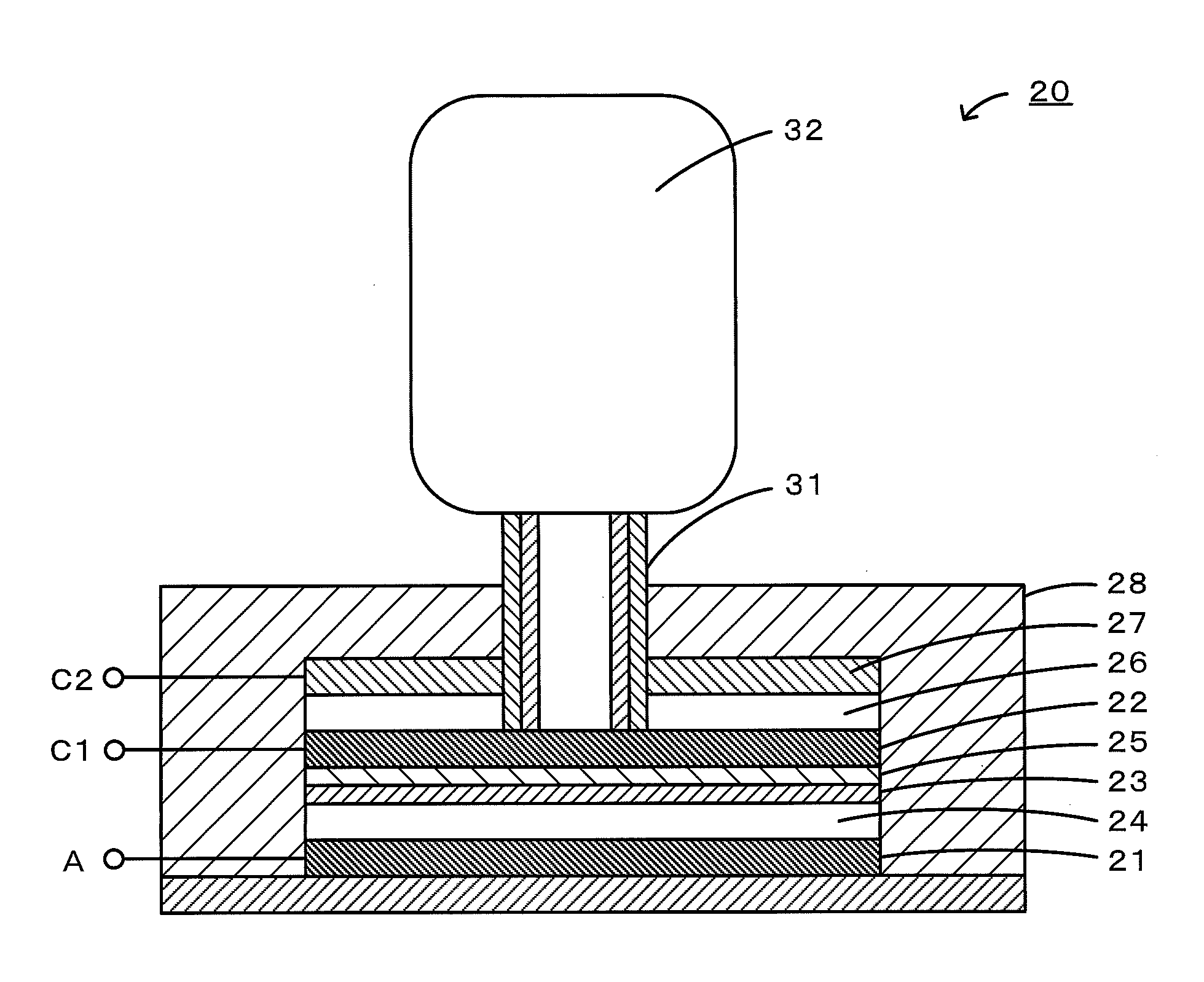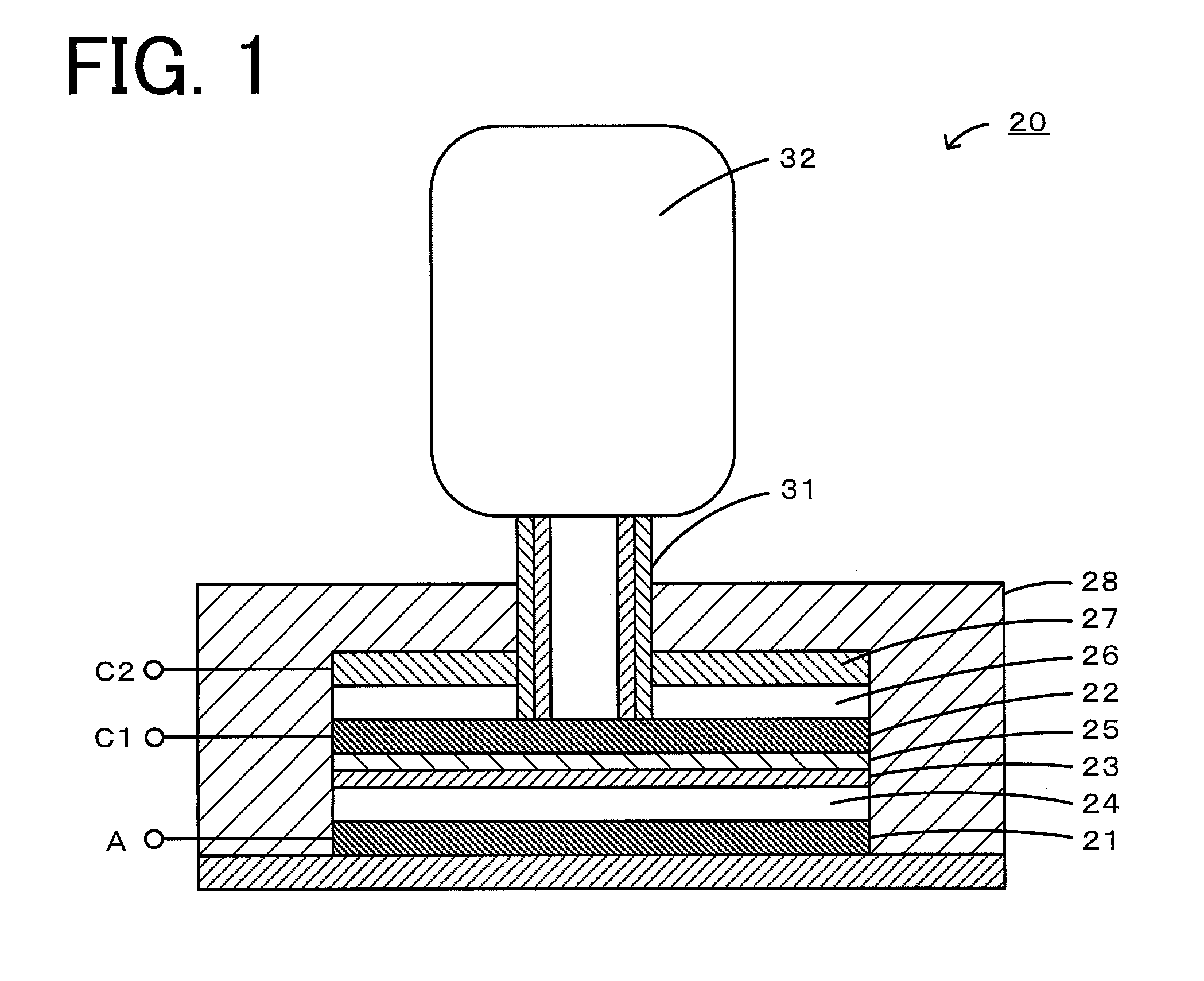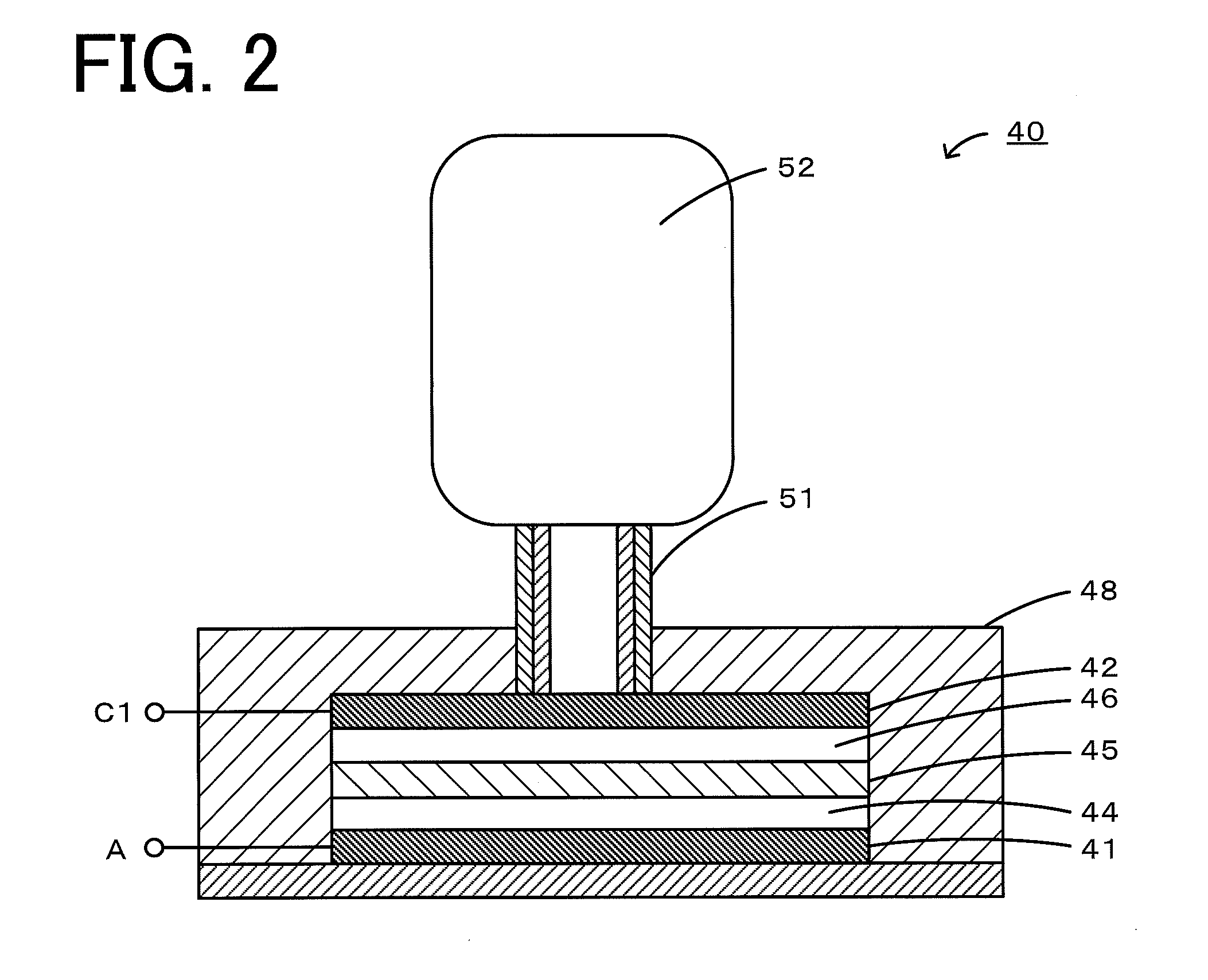Nonaqueous electrolyte air battery and method of use of the same
a technology of air battery and electrolyte, which is applied in the direction of positive electrode, cell components, electrochemical generators, etc., can solve the problems of catalyst deactivation, and achieve the effect of suppressing degradation and improving charge/discharge cycle characteristics
- Summary
- Abstract
- Description
- Claims
- Application Information
AI Technical Summary
Benefits of technology
Problems solved by technology
Method used
Image
Examples
experimental example 1
[0037]Carbon paper (manufactured by Toray, TGP-H-060) was cut into a piece with a weight of 20 mg and used as a positive electrode of a nonaqueous electrolyte lithium-air battery. Metallic lithium (manufactured by Tanaka Kikinzoku) with a diameter of 10 mm and a thickness of 0.5 mm was used as a negative electrode. An electrochemical evaluation cell 40 shown in FIG. 2 was fabricated using these components. First, a negative electrode 41 was placed in a casing 48 made of SUS, and a lithium-conducting solid electrolyte 45 (manufactured by OHARA) was placed between a positive electrode 42 and the negative electrode 41. A nonaqueous electrolyte 44 (electrolyte A) in an amount of 5 mL was injected between the negative electrode 41 and the solid electrolyte 45. As the electrolyte A, a solution composed of 30 parts by mass of ethylene carbonate and 70 parts by mass of diethyl carbonate containing 1 M lithium bis(trifluoromethanesulfonyl)imide as a supporting salt (manufactured by Kanto Che...
experimental example 2
[0039]By performing charging using the electrochemical evaluation cell 40 shown in FIG. 2, all of the stable radical compound (redox catalyst) contained in the electrolyte C was oxidized. The resulting solution was diluted with the electrolyte B so that the concentration was set at 0.01 M (electrolyte D). Separately, an electrochemical evaluation cell was fabricated as in Experimental Example 1, and after discharging was performed as in Experimental Example 1, the electrolyte C in the cell was replaced with 0.2 mL of the electrolyte D. The cell was held for 2 to 20 hours at 25° C., and then discharging was performed again as in Experimental Example 1. In Experimental Example 2, the cycle consisting of discharging, replacement of the nonaqueous electrolyte, and holding of the battery cell described above was repeated. In Experimental Example 2, since the positive electrode (first positive electrode) that generates a discharge product during discharging is separated from the positive ...
experimental example 3
[0040]The charging and discharging test was conducted as in Experimental Example 1 except that 1 mL of the electrolyte B was injected between the solid electrolyte and the positive electrode. In Experimental Example 3, the nonaqueous electrolyte 46 does not contain a stable radical compound (redox catalyst).
[0041]FIGS. 3, 5, and 6 are graphs showing changes in the voltage and battery capacity in the discharging and charging test in Experimental Examples 1 to 3. FIG. 4 is a graph showing changes in the voltage and battery capacity when charging was performed using the electrolyte C in Experimental Example 2. Table 1 summarizes the structure, the charging treatment, and the discharge capacity (mAh) at the third cycle in Experimental Examples 1 to 3. The results show that the lithium-air batteries including the nonaqueous electrolyte that contains a stable radical compound, which is a redox catalyst, (Experimental Examples 1 and 2) have a lower average voltage and a higher charging cap...
PUM
| Property | Measurement | Unit |
|---|---|---|
| thickness | aaaaa | aaaaa |
| holding time | aaaaa | aaaaa |
| holding time | aaaaa | aaaaa |
Abstract
Description
Claims
Application Information
 Login to View More
Login to View More - R&D
- Intellectual Property
- Life Sciences
- Materials
- Tech Scout
- Unparalleled Data Quality
- Higher Quality Content
- 60% Fewer Hallucinations
Browse by: Latest US Patents, China's latest patents, Technical Efficacy Thesaurus, Application Domain, Technology Topic, Popular Technical Reports.
© 2025 PatSnap. All rights reserved.Legal|Privacy policy|Modern Slavery Act Transparency Statement|Sitemap|About US| Contact US: help@patsnap.com



